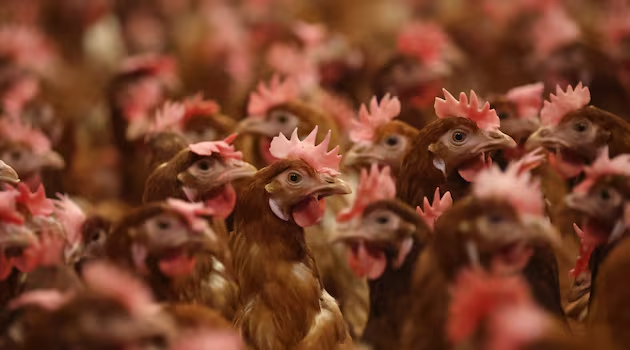
Satellite tracking of wild bird flocks, colour-coded alert systems and localised rapid-reaction protocols may all need to be deployed to deal with the recurring threat of avian flu, an expert has said.
Dr Gerald Barry, assistant professor of veterinary medicine at University College Dublin, said vaccination should also be considered and, as a priority, more research into how the virus spreads.
“We don’t have an absolute, clear understanding about how influenza gets on to farms,” he said.
The focus currently is on direct transmission from wild birds that land on poultry farms or fly over, defecating as they go, as their faeces can carry the virus.
“But there are other possibilities. It could be transmitted in the wind, for example,” said Dr Barry, who is a member of the One Health All Ireland and European Surveillance project, which has avian flu among its research topics.
“It could be that it is carried by small mammals like rodents. You might have a lake close to a farm, an outbreak among wild birds on that lake and rodents that travel between the lake and the farm.”
He was speaking after Fota Wildlife Park in Cork was forced to close after an outbreak of the virus.
Poultry farmers in Cork have expressed fears the disease could spread to their flocks, with farmers rearing free-range turkeys for Christmas particularly concerned.
Nigel Sweetnam, chair of the Irish Farmers Association’s poultry committee, said the Department of Agriculture should introduce regional housing orders, legally obliging farmers in outbreak areas to keep their birds indoors.
The law provides for national mandatory housing orders, and they have been issued in four out of the past five years, with the last one in force from February to May this year.
Mr Sweetnam believes the mechanism could be used locally. “The department already has the country divided into geographical areas for the district veterinary offices, so I think it’s something that could be done for Munster until this outbreak clears,” he said.
Dr Barry agreed there is a need for a more targeted approach to tackling avian flu.
“You issue a housing order locally and then something like an amber warning for the rest of the country for heightened vigilance,” he suggested.
“We also need to improve our surveillance so that we know before we have an outbreak where it is in the wild bird or wild mammal population.
[ Fota Wildlife Park closed until further notice after bird flu outbreakOpens in new window ]
He said a system is in place in parts of the United States to track wild bird flocks by satellite because they know the risk of avian flu increases if a flock lands close to a farm. Farmers have an app that receives an alert at times of concern, enabling them to make an “informed choice as to whether they need to house their flock for that red emergency period”, Dr Barry said.
Vaccinations are used in some countries, but they only weaken the virus rather than prevent transmission. While the birds do not get as sick when vaccinated, the virus may evolve, mutate and cross species, possibly to humans.
“Vaccines should definitely be considered, but they need more development. They’re not where we need them to be yet,” Dr Barry said.
The Department of Agriculture did not comment on the concept of localised housing orders.
A spokesperson said Minister Martin Heydon has reminded all poultry and captive bird keepers to implement “strict biosecurity measures to protect their birds from this virus”.
“The general public are reminded not to touch or pick up dead or sick wild birds. Dead wild birds can be reported to the department via the Avian Check app.”





